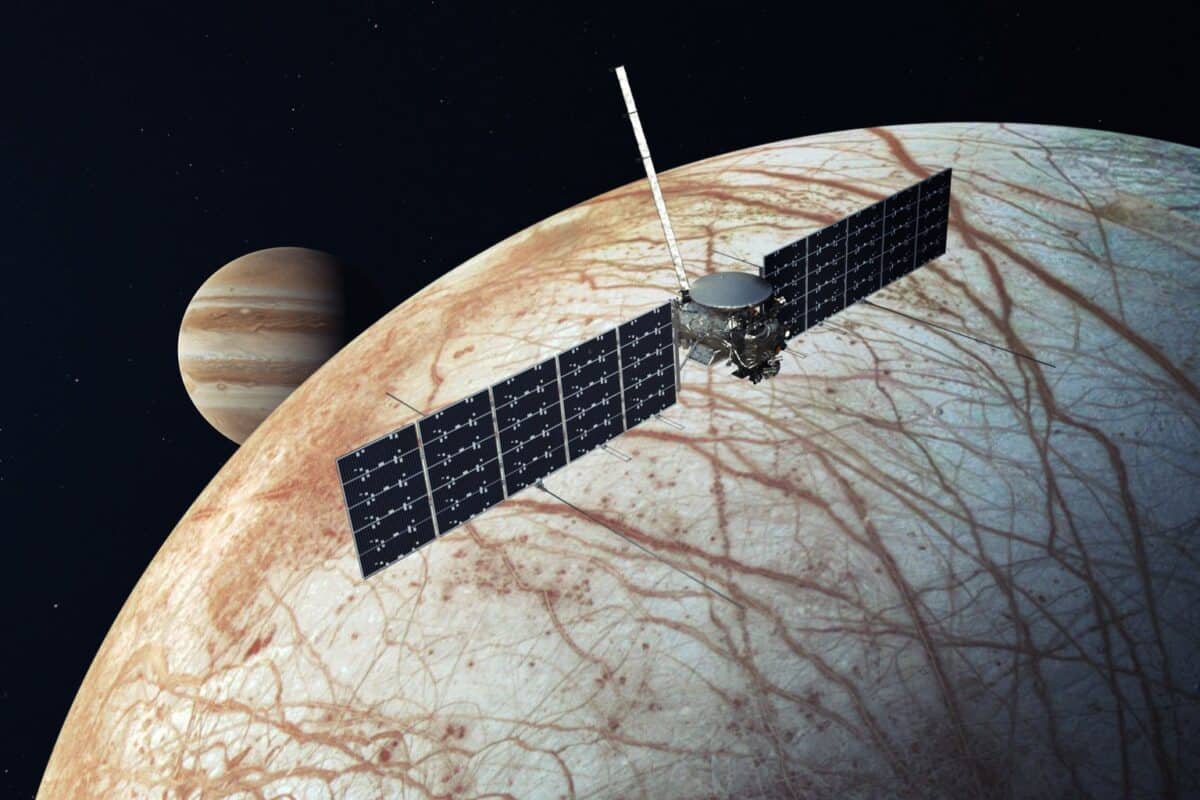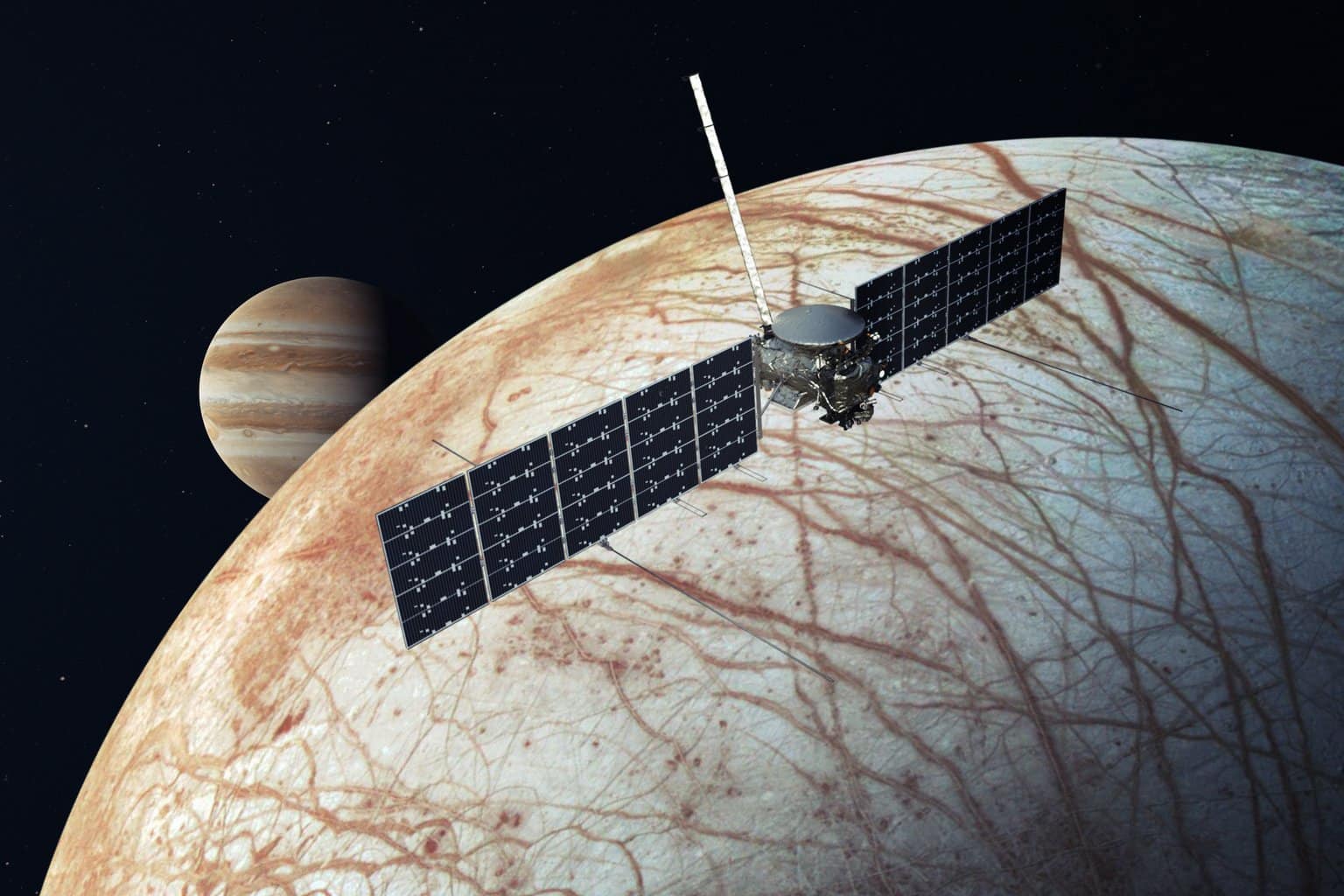NASA is preparing to launch the Europa Clipper mission on October 10, 2024, marking the start of a six-year journey to Jupiter’s icy moon Europa. The spacecraft, NASA’s largest planetary mission, will investigate the moon’s potential habitability by studying its thick ice shell, subsurface ocean, and surface geology.
NASA Gears Up for Europa Clipper Launch to Unlock Mysteries of Jupiter’s Ocean Moon

NASA’s Europa Clipper mission is scheduled for launch on October 10, 2024, from Kennedy Space Center aboard a SpaceX Falcon Heavy rocket. The mission aims to explore Europa, one of Jupiter’s icy moons, believed to have a subsurface ocean that may harbor conditions suitable for life. The spacecraft, NASA's largest for a planetary mission, will travel 1.8 billion miles, reaching Jupiter in April 2030. Equipped with nine instruments, Europa Clipper will conduct detailed surveys of the moon’s ice shell, its ocean, and the surrounding environment to assess its habitability.
The Scientific Mission of Europa Clipper
The primary goal of Europa Clipper is to assess the habitability of Europa, a moon long considered one of the best candidates in the solar system to host life. Scientists believe that beneath Europa’s icy crust lies a vast ocean containing more liquid water than all of Earth’s oceans combined. Europa Clipper will investigate this hidden ocean, measuring its depth and composition, and determining whether the conditions are favorable for life. Using a suite of advanced instruments, including ice-penetrating radar, the spacecraft will be able to probe the moon’s icy shell and reveal the thickness of the ice and the potential for water exchange between the ocean and the surface.
In addition to studying the ocean, Europa Clipper will closely examine the moon’s surface, searching for evidence of active geological processes such as ice tectonics or cryovolcanism, where water or ice erupts instead of molten lava. These processes could help transport materials from the surface to the ocean and vice versa, potentially creating a dynamic environment where life might thrive. The spacecraft will fly by Europa 49 times during its mission, allowing scientists to gather data from multiple locations across the moon's surface, providing a comprehensive view of its environment.
Technical Capabilities and Journey to Jupiter
Europa Clipper is the largest planetary spacecraft ever developed by NASA, spanning nearly 30 meters (98 feet) in length, primarily due to its large solar arrays that will power the spacecraft throughout its long journey. Unlike earlier missions to the outer planets, which relied on nuclear power sources, Europa Clipper is solar-powered. Its twin arrays, designed to span 30 meters, will unfold after launch and provide the necessary energy to operate the spacecraft and its suite of instruments, even in the dim sunlight at Jupiter’s distance from the Sun.
The spacecraft will embark on a six-year journey to Jupiter, passing by Mars in early 2025 for a gravity assist before returning to Earth in 2026 for another assist to propel it toward Jupiter. Upon arrival in April 2030, Europa Clipper will make a final gravity-assist flyby of Ganymede, another of Jupiter’s moons, to slow down before entering orbit around Jupiter. The spacecraft will not orbit Europa directly; instead, it will orbit Jupiter and perform a series of close flybys of Europa. This strategy will allow the spacecraft to avoid the intense radiation around Europa, which could damage its electronics over time, while still gathering detailed data during each pass.
Key Instruments and Scientific Objectives
The Europa Clipper mission is equipped with nine scientific instruments that will allow it to study Europa’s surface, ice shell, ocean, and atmosphere in unprecedented detail. One of the key instruments is the Radar for Europa Assessment and Sounding: Ocean to Near-surface (REASON), an ice-penetrating radar designed to measure the thickness of Europa’s ice shell and determine whether the subsurface ocean reaches close to the surface. This will be crucial in understanding the potential for life, as regions where the ocean and surface interact could provide the necessary conditions for life to emerge.
Another important instrument is the Europa Imaging System (EIS), a high-resolution camera that will capture detailed images of Europa’s surface, revealing its complex geology and identifying potential landing sites for future missions. Additionally, the Europa Thermal Emission Imaging System (E-THEMIS) will map the temperature variations across Europa’s surface, helping scientists identify warmer regions where liquid water might be present near the surface.
Europa Clipper is also equipped with a mass spectrometer, which will analyze the composition of Europa’s thin atmosphere and any plumes of water vapor that may erupt from the surface, as seen by previous observations from the Hubble Space Telescope. If plumes are detected, this instrument could provide direct evidence of the chemical makeup of Europa’s ocean, giving scientists a better understanding of its potential to support life.
Launch Vehicle and Mission Preparations
Europa Clipper’s journey to Jupiter will begin aboard a SpaceX Falcon Heavy rocket, one of the most powerful launch vehicles available today. Initially, NASA had considered using its own Space Launch System (SLS) for the mission, but delays in the development of the SLS prompted the agency to switch to Falcon Heavy. The Falcon Heavy, with its powerful boosters and expendable core, has been stripped down for this mission, removing any hardware related to reusability to ensure the spacecraft reaches its distant target.
The launch window, which was initially set to close on October 30, has now been extended through November 6, giving the team additional flexibility in case of weather delays or technical issues. The launch period’s extension is also a welcome adjustment due to the peak of the Atlantic hurricane season. Once in space, Europa Clipper will rely on gravity assists from Mars and Earth to propel it toward Jupiter in a fuel-efficient manner.
Future Collaborations and Mission Legacy
The Europa Clipper mission is not the only spacecraft that will be studying Jupiter and its moons in the coming decade. The European Space Agency (ESA) is also sending the Jupiter Icy Moons Explorer (JUICE), which will arrive at Jupiter in July 2031, shortly after Europa Clipper. JUICE will study Ganymede, Callisto, and Europa, focusing on their potential habitability and their icy surfaces. The overlap between the two missions will allow for joint observations and complementary data collection, enhancing our understanding of Jupiter’s moons.
While Europa Clipper is not designed to search for life directly, its findings will be crucial in determining whether Europa’s ocean could support life and what future missions might be needed to explore this possibility further. Scientists are already discussing the potential for future missions, including landers that could directly sample Europa’s surface and possibly its subsurface ocean.



